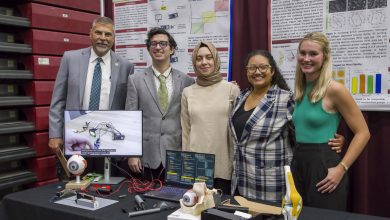Comprehending Mass Murder – Can We Even Try?
By Jim Reynolds, Academic Program Chair for Online Criminal Justice
What lessons will arise from the recent spate of spree and mass murders in our country? A dozen people were killed and dozens more wounded in the early hours of July 20 in Aurora, Colorado by James Holmes, a former doctoral student in neuroscience. The police and paramedics were quickly overwhelmed by the number of victims and the extensive crime scene. I listened to the police radio traffic of the incident and was proud to hear that it appears the responding officers stuck to “active shooter” protocols and were quickly able to identify the gunman, who chose to surrender to police rather than kill himself or go down fighting as many other recent mass murderers have.
Just two weeks later, Wade Michael Page took that route after killing six and wounding two others, then ambushing the first officer on the scene who had stopped to render aid to a victim who fell in the parking lot of the Sikh temple in Oak Creek Wisconsin. A second officer immediately engaged Page and wounded him, prompting Page to shoot himself in the head rather than be captured.
Nine days later, Thomas Alton Caffall III shot two people at his home, including a law enforcement officer who had come to Caffall’s house to serve an eviction notice. He then began firing at passers-by until he was engaged by police officers responding to the scene. One other civilian died and three officers were shot or hit by ricochet debris. Caffall was shot by those officers and later died.
Three mass murders in less than three weeks. I won’t split hairs over Caffall, since had he not been engaged by police he would likely have killed more of his neighbors. His case is different in that his act seemed prompted by the eviction, but bears similarity to the Colorado murders because it appears mental illness may be involved.
Mental illness as a precursor to such violence received more attention just last week as Jared Lee Loughner was allowed to plead guilty to murder and attempted murder for a life sentence without parole rather than face a trial with the death penalty on the table. There is fierce debate about this resolution, but the families concurred and it seems clear that Loughner is a schizophrenic who after being forcibly medicated for over a year is now stable enough to understand the crimes he committed and knowingly take responsibility for them.
Mass murders and spree murders are among the most difficult crimes to prevent or intervene since they usually occur with little or no warning, and can quickly overwhelm a community’s public safety and health care resources. These tragic events fuel fierce debate regarding civil liberties, constitutional rights, and the safety and security of the public, but also present challenges to the public safety agencies that must respond to the events and deal with the aftermath. Mass murder and spree murder are topics that should be thoroughly researched and documented by students of criminal justice, emergency management, and forensic psychology. We take great interest in these crimes because objective analysis and comparative studies can lead to more effective prevention, preparation, response, intervention, investigation, and recovery protocols.
Prevention is perhaps the hardest challenge, one I leave to my forensic psychology colleagues. A week after the shootings, suspect James Holmes had claimed amnesia and the demeanor the public has been able to see since his arrest is difficult and really unfair to interpret. My first impression was that he is a fame-seeker who now sees value in faking amnesia or mental illness, the consequences of his acts suddenly apparent to him, but his behaviors in court have been pretty consistent, something hard to sustain as a fake, I think. The truth of the matter will probably be argued for a couple of years, but most analysts and pundits say that given the weight of the evidence the truth will only be relevant for a sentencing phase, if a death penalty is under consideration. Why he chose this violent act as a public statement and whether what we learn about Holmes can ever be applied to prevent another such act remains to be seen.
Just the same, there is much to learn about and train on in the aftermath. I’ll be interested in where the system fell short. Communities will be looking at their ambulance systems, since we don’t really want the police rushing the wounded to hospitals in patrol cars. We lose patient triage and stabilization, and the critical resource of the armed and trained officer at the scene, not to mention the further hazard of multiple cars converging on the hospitals in a role the officers are neither trained nor equipped for. The providential absence of multiple suspects and secondary devices made it a case of the ends justifying the means.
Police will be performing thorough after-action reviews to see if, where, and when their policing efforts fell short, not to say they did; in fact, it appears they did a superior job. Like hospitals and doctors, the police can be their own most brutal critics, but behind closed doors in the unit and command staff meetings probably already underway. I understand that personnel have already been offered critical incident stress debriefings and counseling. When the time comes they should hit the road with presentations geared to help other agencies assess their own training and preparations for mass casualty events.
What I hope follows is the methodical study of the event from the academic world as well, to train the next generation of public safety professionals. Florida Tech is already a leader in this regard, with faculty and students working closely with the FBI, local police and other organizations to test and develop investigative protocols and techniques. Sadly but necessarily, mass murder is a frequent topic of class study and discussion in criminal investigation, forensic psychology, theories of crime, and violent crime courses in our curriculum. I don’t know if we can ever stop it, but we can become better prepared to try to minimize it and improve the response capability of our protectors.






Jim,
I can tell you that here in KC we get more and more calls for Emotionally Disturbed Parties (EDP’S) then we used to but I think it is in part because society is beginning to realize that the odd behavior they are calling about could be the result of mental illness. I don’t think the people who the police officers deal with on the street have changed or just the way they are being defined. Although, as part of the law enforcement learning process, we have changed the way we respond as well.
bdp
I was the supervisor of the homicide team that investigated the “Carol City 6” in 1977 for the Miami-Dade Police Dept.. Eight people were shot in a home invasion robbery and six of them died. John Errol Ferguson, the shooter, is scheduled to die in Florida’s death chamber tomorrow. Ironically, the media referred to the case as Florida’s biggest mass murder case. It certainly was at the time, but it has been surpassed by several other incidents through the years. It seems like our propensity to experience mass killings seems to grow with the advent of time.